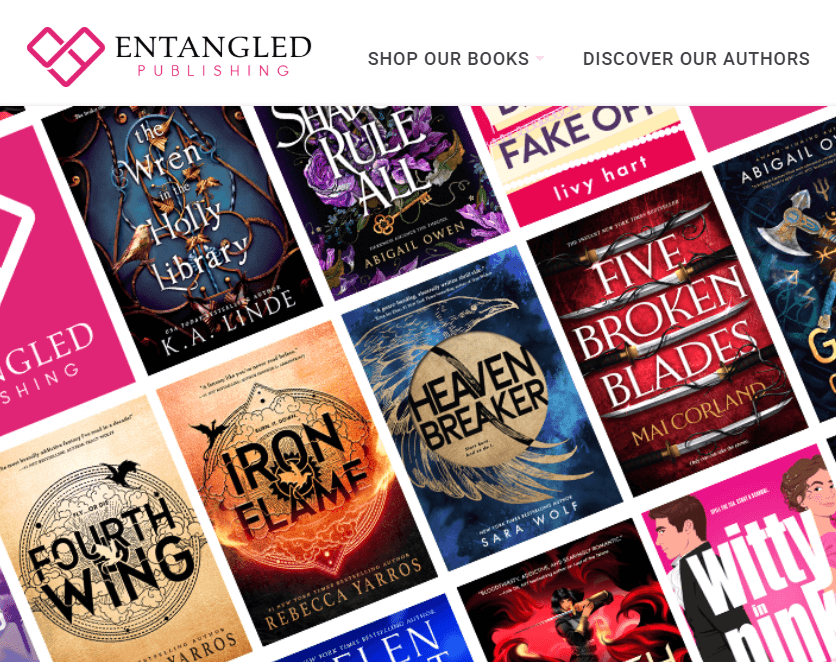
If you’re serious about publishing your book the traditional way, understanding the traditional publishing process step by step is absolutely essential. A lot of writers dive into querying without realizing how much groundwork they need to lay first.
Traditional publishing is not a guessing game or a lucky break. It’s a series of deliberate moves that take your manuscript from private passion project to a book sitting on a shelf at Barnes & Noble.
I’ve seen many talented writers stall out early simply because they didn’t know what was really expected. It’s tempting to think that a strong idea or beautiful prose will automatically open doors, but the truth is, publishing runs on a system.
Editors, agents, and publishers are looking for authors who not only have great books but who also understand how to work inside that system—polishing their manuscripts to a professional standard, querying the right people, and staying patient through months of waiting.
The good news is that once you learn the traditional publishing process step by step, you stop feeling like you’re stumbling in the dark. You start making smart moves, avoiding the mistakes that trip up so many writers, and giving yourself a real, fighting chance.
In this guide, I’ll walk you through the entire journey, share insider tips, and explain how you can give yourself the best possible shot at getting a publishing deal, based on what I’ve learned both personally and through helping others navigate the path.
Step 1: Perfect Your Manuscript
No agent or publisher wants to work with an unpolished manuscript. Your first step is making sure your book is genuinely ready for submission.
This means self-editing thoroughly, getting feedback from trusted critique partners or professional beta readers, and hiring a freelance editor for a developmental edit if you can afford it.
When I was working on my first novel, I made the mistake of thinking that a quick read-through would catch everything. It didn’t. Every time I thought the manuscript was ready, another problem showed up—weak scenes, flat dialogue, clunky pacing.
That’s why treating editing like a non-negotiable part of your writing process makes all the difference between a manuscript that gets passed over and one that gets real attention.
There are three levels of professional editing you should know. Developmental editing focuses on big-picture issues like plot, character development, pacing, and structure. If the foundation of your story is shaky, this is where you catch it.
You cannot assume the book will sell itself, no matter how big the publisher is.
Line editing fine-tunes the language, voice, and style, sanding down the rough edges until the writing flows beautifully. Copyediting catches grammar, spelling, punctuation, and consistency errors because even the best storytelling gets dragged down by simple mistakes if you don’t take care of them.
As bestselling author Neil Gaiman once said, “No one is ever going to see your first draft. Nobody cares about your first draft. And that’s the thing that you may be agonizing over, but honestly, whatever you’re doing can be fixed.” That quote stayed taped to my desk for months while I gutted and rebuilt chapters.
If you think of your manuscript as a rough gemstone, editing is what makes it shine. You can have all the raw brilliance in the world, but without careful shaping, agents and publishers won’t be able to see it.
Step 2: Research the Right Literary Agents or Publishers
In traditional publishing, finding the right partner is everything. Literary agents act as your advocates. They pitch your book to editors at major publishing houses, negotiate contracts, and protect your rights.
Most big publishers won’t even consider unsolicited manuscripts. They only deal with agents. Without one, your chances of getting through the front door drop dramatically, no matter how brilliant your story is.
If you want to traditionally publish a book, you need to dig deep and research agents who genuinely represent your genre and style. I remember spending weeks combing through profiles on QueryTracker and Manuscript Wish List (MSWL), trying to find agents whose interests aligned with my manuscript.
It felt overwhelming at first, but the more I read agent bios, the easier it got to spot the ones who would actually get excited about my book.
Websites like the Association of Authors’ Representatives (AAR) were incredibly helpful too because you know every agent listed there follows a professional code of ethics. It made the whole search process feel a little less like wandering in the dark.
Small presses and independent publishers sometimes accept direct submissions, and they can be fantastic options if you’re strategic.
In 2024, for example, Sourcebooks, Entangled Publishing, and Tiny Fox Press were still accepting unagented manuscripts in select genres, giving new authors more opportunities to break in without an agent.

But even then, it’s critical to research their submission guidelines carefully. Each one has different requirements, and missing a detail could cost you a chance before anyone even reads your first page.
The goal isn’t just finding any agent or publisher. It’s finding one who believes in your book and knows how to sell it to the right audience.
That connection matters more than you might think. An agent who truly understands your voice and vision will fight harder for your book, not just at the start but all the way through your career.
Step 3: Write a Strong Query Letter
Your query letter is your first impression. You need to make it count. Think of it as your one shot to convince an agent to take a closer look at your work.
At its core, a good query letter includes a compelling hook, a one-paragraph summary of your book, and a brief bio mentioning any relevant writing credentials. It sounds simple, but putting it together in a way that feels natural and professional takes serious effort.
Agents read hundreds of queries every week. Most get skimmed for just a few seconds before a decision is made. You want yours to feel sharp, professional, and tailored right from the very first line.
When I wrote my first batch of queries, I thought a flashy opening would impress agents. I learned quickly that trying too hard—or worse, using clichés like “this will be the next Harry Potter”—only made me sound amateurish. Agents are looking for serious writers, not hype.
Personalize your query whenever possible. If you saw the agent mention on MSWL that they love enemies-to-lovers romance, and your book has it, mention that connection clearly and respectfully. It shows you’ve done your homework and that you actually see them as a partner rather than a random contact on a list.
That number alone should tell you how much personalization matters. Taking the time to tailor your letter could be the difference between a full manuscript request and a polite form rejection.
Step 4: Prepare a Winning Book Proposal (for Nonfiction)
If you’re writing nonfiction, you’re not selling a finished manuscript. You’re selling a concept. In traditional publishing, nonfiction authors need to prove there’s a strong market for their idea before a publisher commits.
That’s why learning how to prepare a winning book proposal is critical if you want your submission to stand out from the pile.
A nonfiction book proposal should include a summary of your book, your target audience and why the book matters now, a competitive analysis to show you know your market, a marketing plan because your platform matters a lot here, and two to three sample chapters to give agents and publishers a taste of your writing style and voice.
Think of the proposal as your business pitch—it’s your way of proving there’s real demand for what you’re offering.
When I put together my first proposal, I realized very quickly how much publishers care about the marketing plan.
It’s not enough to write a great book. They want to see that you already have a way to reach readers, whether that’s a social media following, a newsletter list, a podcast audience, or speaking engagements. Your marketing plan tells them you’re ready to hustle alongside them.
It’s also important to remember that memoirs are treated a little differently. Memoirs are seen more like fiction in the traditional publishing world. Agents often expect a complete manuscript before even considering representation.
You can have the most moving story in the world, but without a finished manuscript, it’s very hard to convince anyone to take a chance on it.
A strong nonfiction proposal shows agents and publishers that you are thinking like a professional, not just a writer with a good idea.
Step 5: Submit and Wait
After submitting your query letters, the waiting begins. Most agents reply within 4 to 12 weeks, but some can take up to 6 months. Others might never respond unless they’re interested. This reality is why writers refer to it as being “in the query trenches.” It’s a waiting game that can really mess with your head if you’re not prepared for it.
In my own experience, I heard back from some agents in two weeks and others after four months. The worst part was not knowing if no news meant they were still considering it or if my query had already been buried under hundreds of others.
That’s why you need patience and a solid spreadsheet to track submissions. I made the mistake early on of thinking I could remember everything: who I sent queries to, when I sent them, and who I was still waiting on. After the third week, it turned into a confusing blur. A good spreadsheet will save you a lot of second-guessing later.
Readers grow with you when you show them you’re in it for the long haul.
It’s smart to send batches of 5-10 queries at a time and adjust based on feedback or form rejections. If you’re getting the same polite no over and over, it might be a sign your query needs tweaking before you keep sending it out.
I learned that small adjustments—tightening my pitch, clarifying the stakes—made a big difference in getting more requests. Submitting and waiting feels passive, but managing your process carefully and responding to patterns is what keeps you moving forward while you wait.
Step 6: Sign with a Literary Agent (Optional but Highly Recommended)
Landing an agent is like winning the golden ticket. When an agent offers representation, they believe they can sell your book. That belief matters because once they take you on, they invest real time and energy pitching your work to editors, fighting for the best deal, and helping you build a long-term career.
Before signing, you need to be smart and ask important questions. Ask what revisions they foresee, because many agents will want you to tweak or even heavily revise the manuscript before it goes out to editors.
Understand their communication style and submission strategy too. Some agents check in weekly with updates, while others prefer only reaching out when there’s major news. Clarify commission right from the start.
The standard is 15% of all domestic earnings, but you’ll want to know how they handle things like foreign rights or film deals if those opportunities come up later.
Some authors succeed without agents, especially with small publishers, and I know a few writers who have built solid careers that way. But if you’re aiming for Big Five publishers like Penguin Random House or HarperCollins, an agent is non-negotiable.
The big houses do not accept unsolicited submissions, and even if they did, having an agent in your corner means someone experienced is making sure you get the best possible deal.
Agents are trained negotiators who often secure better advances and protect your long-term rights. I’ve heard too many horror stories of authors who signed bad contracts early in their careers because they didn’t have someone fighting for them.
Having an agent means you have a professional who understands publishing law, market value, and career strategy, all things that can make a huge difference when it comes to not just selling one book, but building a future.
Step 7: Revise Again
Even after landing an agent, more revisions typically follow. Getting an offer of representation is a huge step, but it doesn’t mean your manuscript is ready to go out the door. Agents may ask you to tighten pacing, deepen characters, or rethink plot points before they submit to publishers.
I remember thinking my book was polished enough once an agent signed me, only to realize how many layers still needed work to make it truly competitive in the market.
Once an editor at a publishing house buys your book, get ready for another round of developmental edits. Editors don’t acquire books they plan to leave untouched. They see the potential and want to bring out its full strength.
Sometimes, that means rearranging chapters, expanding character arcs, or even changing endings. It’s a partnership aiming to produce the best possible version of your book, one that can survive tough reviews and stand out on crowded shelves.
Think of it like an architect finalizing a house blueprint before construction starts. Every tweak matters at this stage. If a beam is slightly off in the plans, it affects the entire structure. In the same way, small issues in your manuscript—a flat character, a confusing plot twist, an unresolved theme—can weaken the overall impact.
The goal during this phase is to build something strong, beautiful, and lasting. Every revision brings you one step closer to a book you’ll be proud to put your name on.
Step 8: Sell the Book to a Publisher
When your agent submits your book to editors, it’s called “being on submission.” This is the part where all the polishing, revising, and waiting finally come together.
Your agent sends your manuscript out to carefully selected editors at publishing houses, hoping that one (or more) will fall in love with it. It’s exciting and nerve-wracking at the same time because so much is happening behind the scenes that you don’t get to see.
There are three possible outcomes. First, you might get a pre-empt, where an editor offers immediately to take the book off the market, trying to lock down the deal before anyone else can bid.
Pre-empts can be thrilling because it means someone loved your book enough to move fast. Second, you could end up in an auction, where multiple editors bid and the highest or best offer wins. Auctions are high-energy and can sometimes lead to larger advances and stronger marketing commitments.
Third, there’s the standard offer after some careful consideration, where an editor takes time to read, discuss with their team, and then formally extend a deal. All three outcomes are wins in their own ways.

Getting a publishing deal feels surreal, and it’s a huge validation of your hard work. I remember getting that call and feeling like the air had been knocked out of me in the best way. All the long nights rewriting chapters, all the rejections that came before, suddenly made sense.
However, the submission phase can last months, and some books go through multiple rounds. Sometimes an agent will submit to one group of editors first, and if no one bites, they’ll revise the strategy and send it to another round.
It takes endurance and a steady mindset to get through this part without letting doubt creep in too deeply.
Step 9: Sign the Publishing Contract
Once a publisher offers, the real business begins. After all the creative work you’ve poured into your book, now it’s time to make sure you protect what you’ve built.
Contracts are detailed documents covering your advance, which is money paid upfront against future royalties, your royalty rates, which are typically 10–15% for hardcover sales, and your rights, including print, digital, audio, translation, and film.
Every one of these terms matters because they shape not just your earnings now but your career long-term.
Most agents negotiate aggressively to retain as many rights as possible. A good agent knows that rights to audiobooks, foreign translations, and even potential film adaptations can sometimes bring in more income than the original book deal itself.
If you don’t have an agent, you must consider hiring a publishing lawyer who knows the ins and outs of literary contracts. It’s tempting to get swept up in the excitement of an offer and want to sign quickly, but never sign a contract without understanding every clause.
Hidden details about royalties, payment schedules, or reversion clauses can cause major problems down the road if you overlook them.
A survey by The Authors Guild showed that traditionally published authors who retained more rights earned 40% higher income over their careers. That’s a huge difference, and it proves that negotiating smarter now directly impacts your financial future.
I remember reviewing my first contract with my agent line by line, asking a dozen questions I would never have thought to ask on my own. It felt overwhelming at first, but I can tell you it was absolutely worth it. You are not just signing a deal for one book. You are setting the tone for the opportunities that could follow.
Step 10: Production and Publication
The publisher’s machine kicks into gear once the contract is signed, and this part is where everything you’ve been dreaming about finally starts to take real shape. A lot happens behind the scenes, and it moves faster than you might expect, even if the official publication date is still a year or more away.
Editing comes first. Even after all the revisions you went through with your agent and editor during acquisition, you can expect more rounds of edits, plus copyediting and proofreading. This polishing process is detailed because traditional publishers want every book they release to meet a high standard of quality.
Some edits will still be big-picture developmental changes, while others will zoom in on the small but critical stuff like grammar slips, timeline inconsistencies, or character details that don’t quite add up.
Cover design is next. Publishers usually control this, although many consult the author for input. Seeing a first cover mock-up is one of the most surreal and emotional parts of the journey. I remember holding my breath opening the email that showed my book’s first cover draft.
Sometimes authors are lucky and love it right away; other times, they push back to make sure it fits the tone and genre properly. Either way, the final cover will become a huge part of how your book gets marketed.
Typesetting happens after editing and cover design. This is where they format the interior for print and ebook versions. It’s the step that turns your Word document into an actual book you can flip through, complete with chapter headings, page numbers, and professional layout choices that affect readability.
Marketing and publicity kick in around this time, too. Publishers handle some aspects, like getting advance copies into the hands of early reviewers, arranging interviews, or submitting your book for trade reviews, but they expect you to build your platform too.
Editors, agents, and publishers are looking for authors who not only have great books but who also understand how to work inside that system.
In today’s world, most first-time authors still need to hustle hard for reviews and attention. Having a strong online presence, connecting with book bloggers, and reaching out to niche communities can make a big difference in your book’s early life.
Distribution follows all of this. Your book becomes available in major retailers like Amazon, Barnes & Noble, indie bookstores, and libraries. Seeing your title pop up on all these platforms is thrilling, but wide distribution doesn’t guarantee strong sales without strong marketing to back it up.
You cannot assume the book will sell itself, no matter how big the publisher is. Your voice, your visibility, and your persistence will still play a huge role in how far your book travels once it’s out in the world.
Step 11: Launch Day and Beyond
Launch day is an emotional rollercoaster. You’ll watch rankings, check sales, and anxiously wait for reviews. It feels like everything you’ve worked for is suddenly out of your hands, and every hour brings a new wave of excitement or worry.
I still remember refreshing my book’s Amazon page every few minutes, hoping for a new review or a tiny bump in rankings. It’s natural to be glued to the numbers at first, but it’s important to keep your long-term vision in mind.
Here’s the hard truth: publishing is not a sprint. One book rarely makes or breaks a career. Even the most beautifully written debut can take time to find its full audience. Success builds over time, through multiple books and sustained audience engagement.
Every book you publish becomes another door for readers to discover you. Building a career in traditional publishing is a long game that rewards persistence, patience, and constant growth.
In my case, even after landing a traditional deal, I realized how critical it was to maintain my email newsletter, interact on social media, and continue building a personal brand.
I thought the publisher would handle most of the heavy lifting when it came to marketing, but the reality was that the most effective promotion came from the relationships I built directly with readers. Showing up consistently, sharing updates, celebrating small wins, and simply being accessible made a bigger impact than any press release.
The most successful authors, like Colleen Hoover, Brandon Sanderson, and Taylor Jenkins Reid, didn’t explode overnight. They cultivated audiences book after book, creating a strong foundation that made each new release even bigger than the last.
Readers grow with you when you show them you’re in it for the long haul. That’s how lasting careers are built—one book, one reader, one connection at a time.
How Long Does the Traditional Publishing Process Take?
Manuscript completion to agent offer can take anywhere from 3 to 12 months. Agented submission to publisher offer might add another 2 to 12 months. From contract signing to publication, expect another 12 to 24 months.
Altogether, you’re looking at 18 months to 3 years, sometimes longer, depending on how many rounds of revisions or submissions are needed along the way.
Publishing is a long-term investment. Think of it like planting a tree. You nurture it, protect it, and wait patiently before you ever see the first signs of real growth. It doesn’t bear fruit immediately, but when it does, the rewards can be extraordinary.
I remember finishing my first manuscript and thinking I might hold a published book within a year. Reality taught me to slow down, trust the process, and focus on building something strong rather than rushing for quick results.
When you step into traditional publishing, you are building a career that could last decades, not chasing a single moment of success. Every month you spend waiting, revising, and improving is laying the foundation for everything you’re going to accomplish later.
I believe traditional publishing is still one of the most rewarding paths for serious writers. It’s grueling, slow, and filled with rejection, but when you finally hold your book in your hands, knowing it passed through rigorous professional gates, the feeling is unmatched.
No shortcut or instant upload can replace the pride you feel knowing your work was vetted, polished, and championed by an entire team of industry professionals who saw real value in what you created.

There are faster ways to publish today, but traditional publishing is a vote of confidence from an entire industry. Every editor, agent, and marketing team that touches your book is investing their reputation in your story. That trust carries weight.
If you’re willing to put in the work, stay patient, and see setbacks as part of the path rather than dead ends, it can lead to opportunities you never imagined—foreign translations, film adaptations, speaking gigs, bestseller lists.
These milestones do not happen overnight, but they are absolutely within reach for writers who stay committed and keep pushing forward even when progress feels slow.
You owe it to yourself—and your story—to give it the best chance possible. You already did the hard part by writing the book.
Now give it the care, respect, and time it needs to find the audience it deserves. Traditional publishing demands resilience, but the doors it can open are bigger than anything you can rush toward alone.




